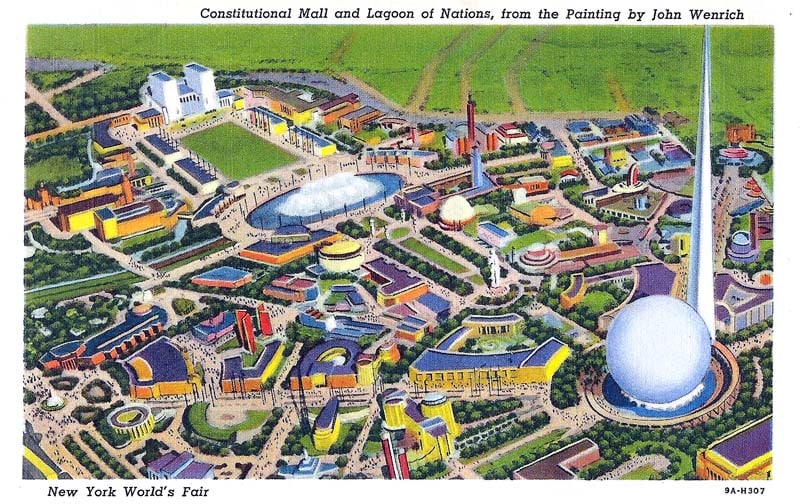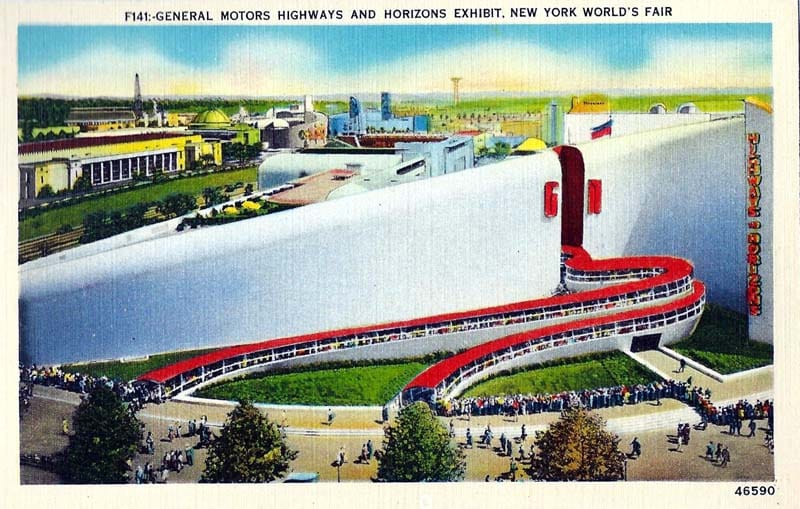
In 1935, New York, as with the rest of the country, was still in the throes of Depression. A group of enterprising investors got together with a plan to make Queens County the site of an upcoming World’s Fair, a gala event designed to bring millions of visitors—and their money—to Long Island.
It worked. The 1920s were a decade of economic boom and unbridled optimism. The 1930s, economic depression and widespread uncertainty. The United States, however, never lost its old confidence. For those Americans who did have jobs, still the vast majority, income rose 17 percent per annum. And so, the 1939 fair, depression or no depression, became legendary for its optimistic view of the future. Indeed, “the future” was the main theme of this paean to scientific and technological progress. That worked, too. The fair ran for two years, drawing nearly 45 million people to then-bucolic Queens County.
Alas, there was the problem of costs. The fair’s operating budget ran to $67 million. When the fair concluded in October 1940, revenues totaled $48 million. The Fair Corporation, an entity brought into existence to finance and promote the fair, had to declare bankruptcy. From those debts, however, was born a legacy. To make up some of the money, the corporation sold its famous ride, The Life Savers Parachute Jump, to Luna Park in Coney Island, where it was rechristened the Parachute Jump at Steeplechase Park, a ride that continues to attract millions.

The fair innocently promised “The World Of Tomorrow.” It represented a mixture of piety and innovation. It opened on April 30, 1939, itself the 150th anniversary of George Washington’s inauguration as president of the United States, an historical event that also took place in New York City. A time capsule for the event contained writings by Albert Einstein and Nobel Prize-winning novelist Thomas Mann, plus a Gillette safety razor, a pack of Camel cigarettes, a Mickey Mouse watch and “millions of pages of text on microfilm.” The capsule contained nods to America’s agrarian past, such alfalfa, barley, carrots corn, cotton, rice, sugar beets, tobacco and wheat seeds. The fair featured a Borden’s exhibit, complete with 150 heifers being bathed, milked and dried in a mechanical fashion.
But mostly, the fair promised a dazzling tomorrow. It opened with an opening ceremonies speech by Einstein on cosmic rays, after the which the fair’s lights were turned on. Major corporations—RCA, General Electric, Westinghouse, General Motors, General Electric, Ford, AT&T and IBM—dominated the surroundings, showcasing their latest products to spellbound audiences. Einstein’s speech was upstaged by a televised address by President Franklin D. Roosevelt, welcoming visitors to the fair. The speech could be seen on a grand total of 200 television sets in the New York area, viewed by 1,000 people. Its symbolism was significant. RCA president David Sarnoff had wanted to use the fair as television’s debut to a mass audience. That really didn’t happen, but the same year saw the first major league baseball game, one between the Brooklyn Dodgers and the Cincinnati Reds from Ebbets Field, being broadcast. It would take television another two decades before completing its conquest of the living room, but the World’s Fair is where history was made.
On it went. The IBM exhibit also made a big splash, introducing electric typewriters and electric calculators. The Continental Baking exhibit included sliced bread, dubbed “wonder bread.” The Ford Pavilion entertained with a race track in perpetual motion by a crew of race car drivers, while the Chrysler exhibit treated visitors to an air-conditioned theater, where they could watch a Plymouth being assembled. The AT&T pavilion showcased a mechanized voice, speaking to amazed attendees. Not to be outdone, Westinghouse debuted a 7-foot-tall robot, “Elektro the Moto-Man,” who also spoke a few words to visitors.
The fair was remarkably insightful about the future. Representative of this was the Middleton Family: husband, wife and two children who displayed such amenities as an automatic dishwasher. The Middleton family could have been residents of those depicted on the Futurama exhibit, a vast array of towns, highways, homes, automobiles and plant life, all anticipating the suburbia that would emerge in the 1950s.

The stunning display of new technology wasn’t able to defray costs and so the fair’s organizers decided to place a greater emphasis on entertainment rather than innovation as the fair moved into its final year. The fair closed on Oct. 27, 1940. The fair’s financial failure hardly diminished its importance. Those who attended could never forget the technology on display. Few could imagine the impact—most notably television and air conditioning—that they would have on everyday life. The young Carl Sagan was so impressed that he would choose a career as a prolific scientist himself. The fair has lived on, celebrated in fiction (E.L. Doctorow’s novel, The World’s Fair) and in song (Aimee Mann, “50 Years After The Fair”), with numerous references to it in popular culture.
The fair represented a tragic grandeur—and a terrible irony. Promising a utopian future, it opened with another world war set to explode. By 1939, Nazi Germany had annexed Austria and Czechoslovakia. In the fall of 1939, a British war guarantee to Poland over any German aggression was shattered by the Sept. 1, 1939, invasion of that Eastern European nation. The world of tomorrow turned out to be another global conflict, one even more devastating than World War I.
All of this was hardly the fault of a group of patriotic New York businessmen who needed to put their city back on the map again. Which they did. Less than 30 years later, the World Fair’s returned to that same exact Flushing destination, for the World’s Fair of 1964, which also attracted millions from around the world.



















